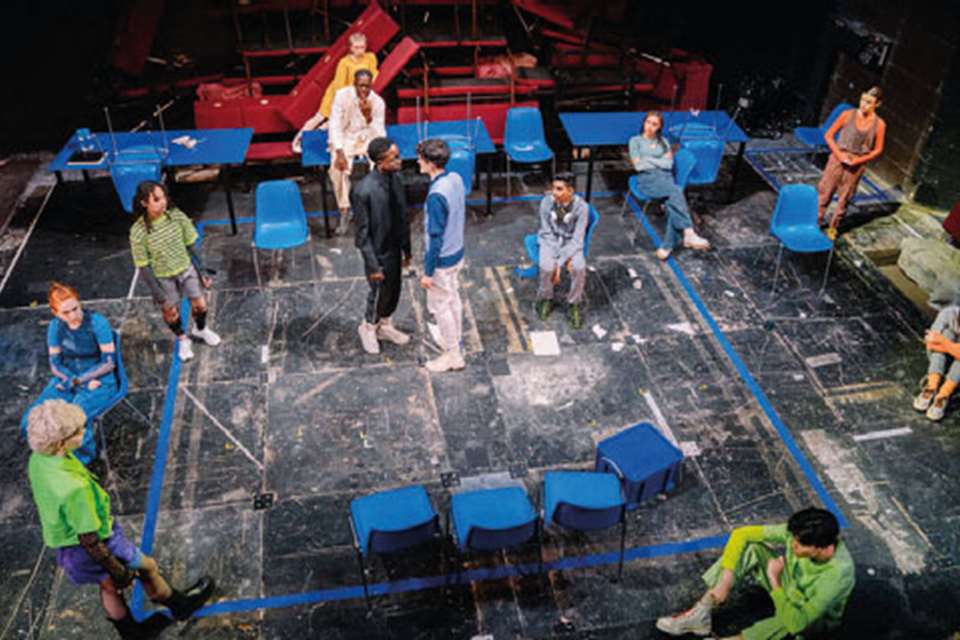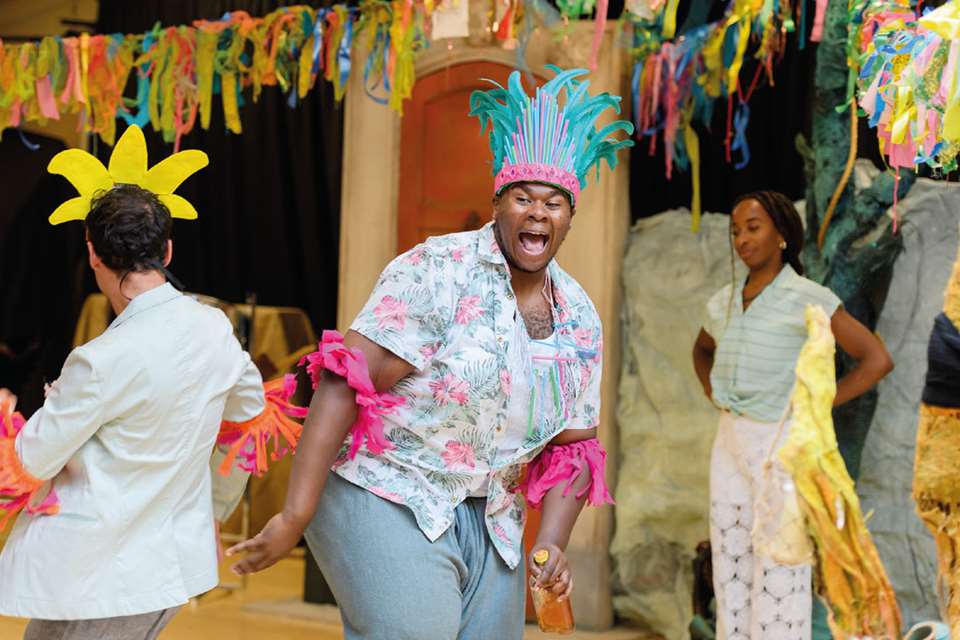Performance review: Hamlet, Bristol Old Vic
Freya Parr
Thursday, December 1, 2022
'A dark and contemporary take on a Shakespearian classic.'

Courtesy Bristol Old Vic
With so many historical productions that can seem out of touch for today's students, it can be hard to engage young people in the work of Shakespeare. Bristol Old Vic's new production of Hamlet presents a thoroughly contemporary interpretation of Shakespeare's production, while never feeling heavy-handed. For students that struggle to understand Shakespearean English, the cast perform these familiar monologues with a delivery so clear and true to life that you never feel as though the text is simply washing over you. The phrases don't feel as though they need to be translated: they have poetry and musicality, but they are spoken with phrasing that makes sense.
With the death of Queen Elizabeth II, the dawn of a new monarchy and the new king having closed his first address to the nation with a quote from Hamlet's final scene, this feels like a particularly resonant moment to shed new light on this work. Billy Howle returns to Bristol having trained here at the Bristol Old Vic Theatre School as a student. He brings an introverted, untrusting side out of the title character. His Hamlet is painted as a puritanical incel (involuntarily celibate), a reading that befits the original script and never feels like a desperate grasp for contemporary relevance. He manically records his darkest thoughts on a tape recorder, as though he is an extremist YouTuber proliferating damaging ideas and concepts across the internet. With jagged movement and frenzied action, Howle's Hamlet unravels and we are thrown headlong into a Hamlet that is a modern psychological thriller.
The set design and staging provide a suitably dark, contemporary backdrop for this version of Denmark. ‘We wanted the stage space to at times be very small and intimate, but then large and open,’ says designer Alex Eales. ‘The stage at Bristol is notoriously deep, but this was a real benefit as the negative space around the set becomes deep inky gloom.’ Eales's design makes use of the stage's dark spaces, with the shadowy corners and darkened voids offset against the action, which is full of visceral intensity and dynamism. A brutalist set of brushed concrete stairs provides a focal point and rotates, offering multiple angles and opportunities for staging different scenes. Sound design is used subtly to underpin and build moments of tension with gentle throbbing and pulsating of ambient musical textures.
With such a uniquely contemporary interpretation, this is a Hamlet to engage despondent students and spark discussion.



